
The Downcreek Big Dipper paddle was the result of a relationship which started with an email…
Hi Ray,
I contacted you recently regarding leaving you some demo paddles to trial & give me your thoughts on. If you could let me know your preferred shaft length so as I can leave you a couple of paddles that are a good fit. I have a new, (unlisted on the website) deep water paddle and a traditional beavertail design; the ‘Dipper’ in mind for you.
Jude Todd
Downcreek Paddles
This was the start of my relationship with Downcreek Paddles. The chance to try some paddles was attractive and after a little more discussion, a set of paddles duly arrived.
I was immediately struck by the craftsmanship, attention to detail and the beauty of the paddles. I was keen to try them, both for myself and for my customers.
My initial favourite was the Kingfisher. For use in deep water, this is a long, narrow-bladed paddle based on a Cree hunting design. Strokes like the knifed-J or Indian are a dream with this. It is great for distance and/or delicate stuff and the long, tapering blade allows the gradual build-up of power in a stroke, therefore lessening stress on muscles and tendons.
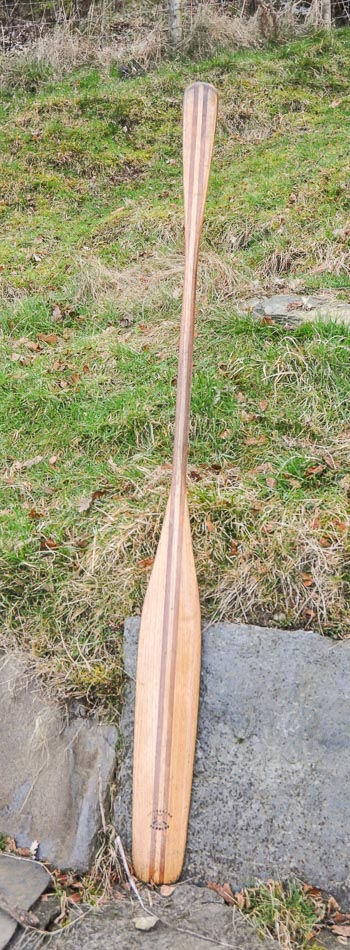
Also included in the selection was the Dipper. It is a traditional Beavertail design with a wide blade; the full width being achieved early in the blade. This is the paddle traditionally used wherever big and immediate steering was needed. A lot of blade is grabbing water immediately on placement. The steersman in the great 35’ Birchbark canoes of the Voyageurs used this style as did the bowman when steering was needed up that end.
A lot of my customers loved it, but it wasn’t working for me. The blade was too small for my strength and I wasn’t getting the grip I wanted. It was back to Jude for a chat.
Now here was the start of my real relationship with Downcreek. Not only did I have someone that wanted me to use their product, they also wanted my input and ideas. We agreed that a bigger blade would be a good option and within a few weeks the ‘Big’ Dipper arrived.
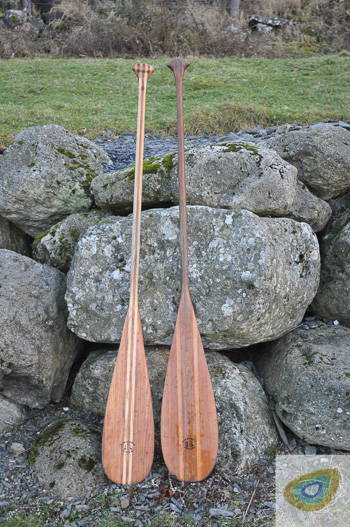
Straightaway, this new blade did it for me. Heading into strong winds, it gave me the grip and power I wanted. This one and the Kingfisher were now competing for my time with wind and environment dictating choice. This is not to discount the Dipper.
In the same way we would automatically choose paddle length to match a paddle height, then we should be thinking of blade size in terms of build and strength. My partner Lina paddles with a Dipper and loves it.
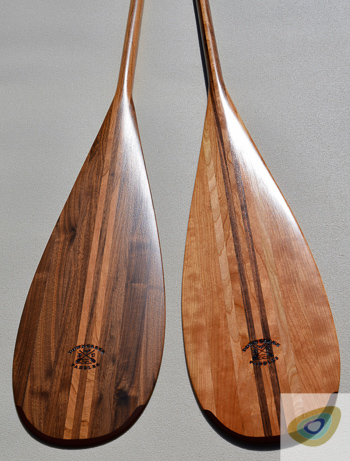
I was enjoying using the Big Dipper too much and increasingly using mine on rivers where the water was deep enough. I was treating it with care and quickly changing to a more robust paddle in shallower or rocky rapids. Jude and I were again thinking on the same wavelength and he was wanting to design a white-water paddle. The Big Dipper would be a good base to work from.
So, the next paddle to arrive was a modified Big Dipper. This wasn’t a prototype but really a test bed for materials and ideas. The blade was covered with a layer of 4oz S-Glass cloth finished with epoxy. Because it was test bed, it wasn’t even well balanced, as the reinforcing material for the blade had made it heavier at that end and it didn’t sit as well in the hands. This was not a test of the design but rather the materials, as we needed to know the problems.
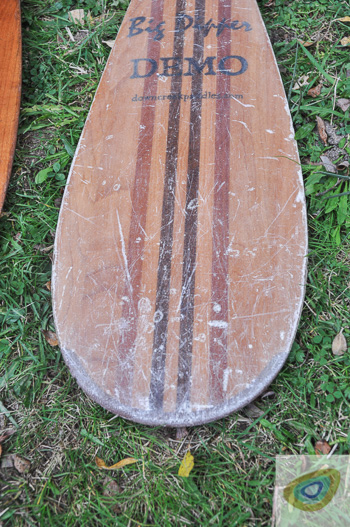
I set about the testing with glee and I used the paddle for all my white-water paddling. There were good reasons that this was the design of choice for white-water paddlers, as historically, this style of blade works well when you want control. When it got shallow I punted off the bottom, something I would never normally do with a wooden paddle. Anything to stress the design and find the weaknesses.
Meanwhile Jude was working on the next level. A prototype of the finished paddle.
It even had my name on it. It is a thing of great beauty.
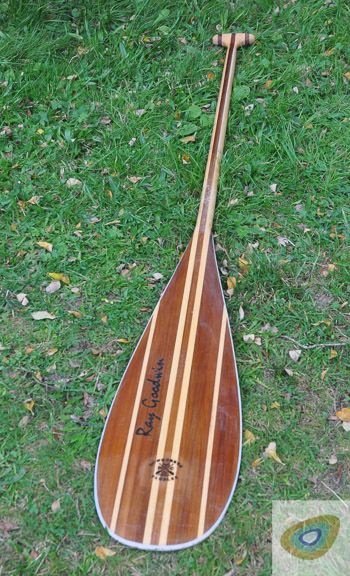
The balance was now correct and the paddle sat easily in my hands. To toughen up and protect the blade edges and tip, Downcreek had used Dynel composite cord. This material was developed specifically for reinforcing paddle edges and tips and has very high abrasion resistance. The blade face was again covered with a double layer of 4oz S-Glass cloth which continued for a few centimetres up the shaft to give protection when levering off the gunwale.
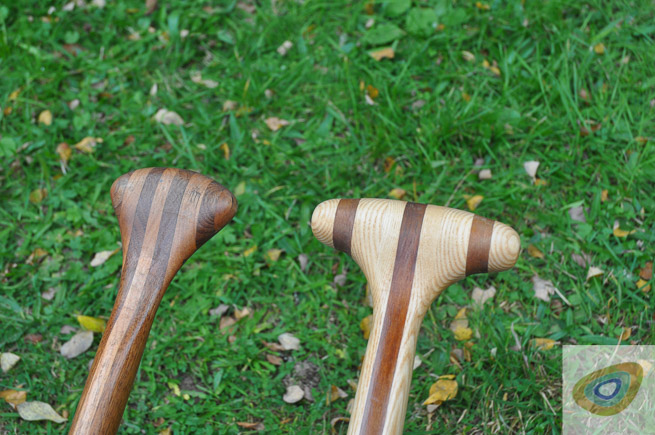

So, it was back to testing, but this time with a little more love and no more wilful punting through shallows. I loved it on both white-water and in the wind. It was light and yet robust enough for the job. It was turning into my favourite white-water paddle of all time.
There was one hiccup however, and that was the extended sheathing on the shaft. After several River Spey trips with Frontier and my own work at home, the sheathing was wearing through on the shaft. On my other Downcreek paddles with no sheathing, this was not a problem and just a frequent re-oiling saved any problems and wear. The solution was simple. Jude decided for the production models to stop the sheathing at the top of the blade.
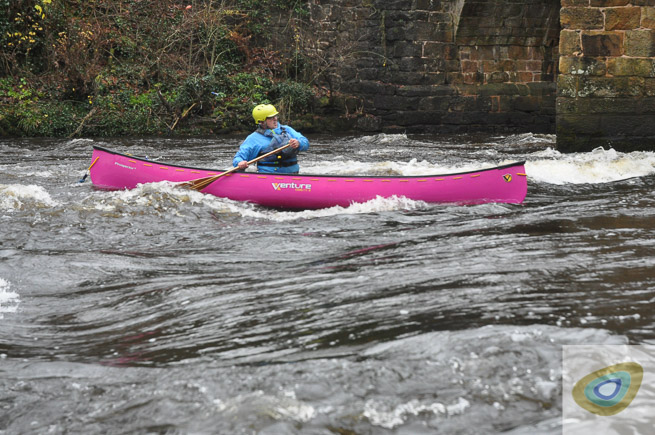
It has been a real pleasure to be associated with Downcreek and to be involved in the development of such a great paddle.
Latest posts by Ray Goodwin (see all)
- Mastering The J-Stroke - April 15, 2020
- Downcreek Big Dipper: The Evolution Of An Outstanding Paddle - February 21, 2017
- Outfitting My Canoe: Ray Goodwin - September 19, 2013

Stephen Walker
Hi Ray,
Wow, those paddles are indeed things of beauty, in fabrication, form and obviously function.
And it’s got your name on it!
Great photographs too. I especially like the first one. Most evocative.
Happy dipping 🙂
Stephen
Downcreek Jude
Hi Ray & Paul,
It’s been a great pleasure working with and meeting you guys. Thanks for the brilliant article & great feedback…more power to both your elbows! The WW BigDipper has been a resounding success in the four months it’s been available and we couldn’t have done it without the mighty Ray Goodwin’s invaluable input.
Warmest regards,
Jude
Paul Kirtley
Hi Jude,
It has been a pleasure meeting and corresponding with you too. I’ve thoroughly enjoyed paddling with my Big Dipper and look forwards to getting my hands on a WW Big Dipper of my own, when I get around to ordering one from you. It’s also been great looking over Ray’s shoulder as he works with you to develop these paddles into what they are now.
Warmest regards,
Paul